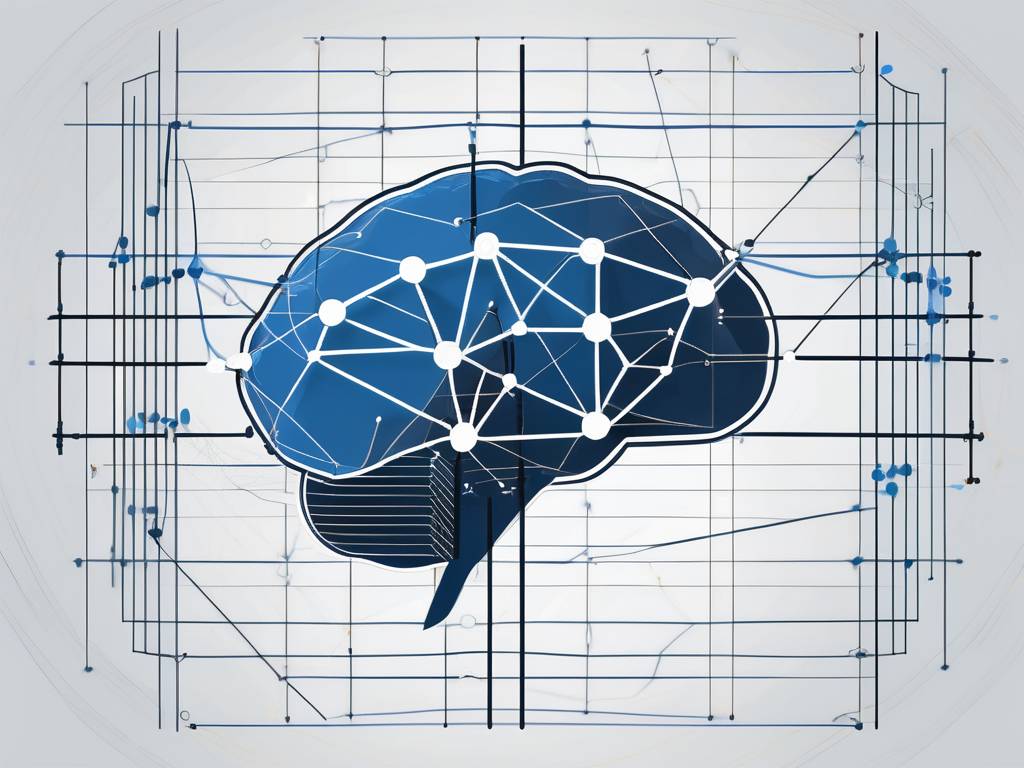Supervised Learning: Machine Learning Explained
Supervised learning is a subfield of machine learning that involves the use of labeled datasets to train algorithms that to classify data or accurately predict outcomes. As the name suggests, supervised learning algorithms learn from tagged input and output data.
The primary aim of supervised learning is to build a model that makes predictions based on evidence in the presence of uncertainty. It’s a data-driven approach for approximating complex functions. Supervised learning can be categorized into two types of problems when modeling: Classification and Regression.
Understanding Supervised Learning
Supervised learning is where you have input variables (x) and an output variable (Y) and you use an algorithm to learn the mapping function from the input to the output. The goal is to approximate the mapping function so well that when you have new input data (x), you can predict the output variables (Y) for that data.
It is called supervised learning because the process of an algorithm learning from the training dataset can be thought of as a teacher supervising the learning process. We know the correct answers; the algorithm iteratively makes predictions on the training dataset and is corrected by the teacher. Learning stops when the algorithm achieves an acceptable level of performance.
Types of Supervised Learning
Supervised machine learning can be divided into two categories: classification and regression. Classification problems have discrete and finite outputs called classes. For example, predicting whether an email is a spam or not a spam, or whether a tumor is malignant or benign are examples of classification problems.
On the other hand, regression problems have continuous and infinite outputs. For example, predicting the price of a house based on its features like size, location, age, etc., or predicting the temperature of a city based on past weather conditions are examples of regression problems.
How Supervised Learning Algorithms Works
Supervised machine learning algorithms are trained using labeled examples, such as an input where the desired output is known. For instance, a piece of equipment could have data points labeled either “F” (failed) or “R” (runs). The learning algorithm receives a set of inputs along with the corresponding correct outputs, and the algorithm learns by comparing its actual output with correct outputs to find errors. It then modifies the model accordingly.
Through methods like supervised machine classification, regression, prediction and gradient boosting, supervised learning uses patterns to predict the values of the label on additional unlabeled data. Supervised learning is commonly used in applications where historical data predicts likely future events.
Key Concepts in Supervised Learning
There are several key concepts that are fundamental to understanding supervised machine learning. These include the training set, the validation set, the testing set, the loss function, and the learning algorithm.
The training set is the data that the algorithm uses to learn. The validation set is used to prevent overfitting of the model during training. The testing set is used to evaluate the final model. The loss function measures the discrepancy between the predicted and actual outputs. The learning algorithm is the method by which the model learns from the data.
Training Data
The training set is a dataset used to train the model. In the training set, the desired outputs (labels) are known and included. This set is used to build up a model that fits the data as well as possible. The model is built by analyzing the training set and learning from it. The model makes predictions on the training data and the errors it makes are noted. The model is then adjusted to make better predictions.
Training datasets are distinct from test sets, which are used to evaluate the performance of the model using a set of data separate from the data used to train the model. This helps to ensure that the model’s performance is generalized and not simply a result of overfitting to the training data.
Validation Set
The validation set is a set of data separate from the training and test sets that is used to tune the parameters of the model. The validation set provides a unbiased estimate of the model’s performance while the model is being trained. It is used to adjust the complexity of the model, such as the number of hidden units in a neural network.
By using a validation set, you can avoid overfitting your model to the training data, which can result in a model that performs poorly on new, unseen data. The validation set serves as a check on the model’s ability to generalize to new data.
Testing Set
The testing set is a set of data that is used to evaluate the performance of the final model. The testing set is separate from the training and validation sets and provides an unbiased estimate of the model’s performance on new, unseen data.
It’s important to use a testing set to evaluate your model because it allows you to see how your model will perform in the real world, on data it hasn’t seen before. This helps to ensure that your model is not just memorizing the training data, but is actually learning to generalize to new data.
Supervised Machine Learning Algorithms
There are several popular supervised machine learning algorithms that can be used. These include linear regression, logistic regression, decision trees, random forest, gradient boosting, support vector machines (SVM), and neural networks.
Each of these algorithms has its strengths and weaknesses, and the choice of which algorithm to use depends on the type of data you have and the type of problem you’re trying to solve. Some algorithms are better suited for classification problems, while others are better for regression problems. Some algorithms can handle large amounts of data, while others are better suited for small datasets.
Linear Regression
Linear regression is a simple and commonly used supervised learning algorithm. It’s used for solving regression problems. In linear regression, the relationships are modeled using linear predictor functions whose unknown model parameters are estimated from the data. Such models are called linear models.
Linear regression has many practical uses. Most applications fall into one of the following two broad categories:
- If the goal is prediction, or forecasting, or error reduction, linear regression can be used to fit a predictive model to an observed data set of values of the response and explanatory variables.
- If the goal is to explain variation in the response variable that can be attributed to variation in the explanatory variables, linear regression analysis can be applied to quantify the strength of the relationship between the response and the explanatory variables, and in particular to determine whether some explanatory variables may have no linear relationship with the response at all, or to identify which subsets of explanatory variables may contain redundant information about the response.
Logistic Regression
Logistic regression is a statistical model that in its basic form uses a logistic function to model a binary dependent variable, although many more complex extensions exist. In regression analysis, logistic regression (or logit regression) is estimating the parameters of a logistic model (a form of binary regression).
Logistic regression is used in various fields, including machine learning, most medical fields, and social sciences. For example, the Trauma and Injury Severity Score (TRISS), which is widely used to predict mortality in injured patients, was originally developed by Boyd et al. using logistic regression. Many other medical scales used to assess severity of a patient have been developed using logistic regression. Logistic regression may be used to predict the risk of developing a given disease (e.g. diabetes; coronary heart disease), based on observed characteristics of the patient (age, sex, body mass index, results of various blood tests, etc.).
Challenges in Supervised Machine Learning
While supervised learning has been incredibly successful in solving a wide range of problems, it’s not without its challenges. Some of the most common challenges include overfitting, underfitting, lack of sufficient data, and the curse of dimensionality.
Overfitting occurs when the model learns the training data too well, to the point where it performs poorly on new, unseen data. Underfitting, on the other hand, occurs when the model is too simple to capture the underlying structure of the data. Both of these problems can lead to poor performance on new data.
Overfitting
Overfitting is a concept in statistics that refers to a model that is tailored too closely to the training data. This happens when the model is excessively complex, such as having too many parameters relative to the number of observations. A model that has been overfit will generally have poor predictive performance, as it can exaggerate minor fluctuations in the data.
The potential for overfitting depends not only on the number of parameters and data but also the conformability of the model structure with the data shape, and the magnitude of model error compared to the expected level of noise or error in the data.
Underfitting
Underfitting occurs when a statistical model or machine learning algorithm cannot capture the underlying trend of the data. Underfitting would occur, for example, when fitting a linear model to non-linear data. Such a model too would have poor predictive performance.
Underfitting is often a result of an excessively simple model. Both overfitting and underfitting lead to poor predictions on new data sets. The balance between overfitting and underfitting can be represented using the Bias-Variance tradeoff.
Applications of Supervised Learning
Supervised learning has a wide range of applications in many fields. It’s used in business for customer segmentation, in healthcare for disease prediction, in finance for credit scoring, in computer vision for image classification, in natural language processing for text categorization, and in many other areas.
One of the most common uses of supervised learning is in classification problems, where the goal is to predict a class label for a given input. For example, email spam detection is a classification problem where the input is an email and the output is a label indicating whether the email is spam or not.
Healthcare
In healthcare, supervised machine learning can be used to predict whether a patient has a particular disease based on a set of symptoms. For example, a model could be trained on a dataset of patient records, with each record consisting of a set of symptoms and a label indicating whether the patient has the disease. The model could then be used to predict whether a new patient has the disease based on their symptoms.
Supervised learning can also be used in healthcare to predict patient readmissions, to predict disease progression, to personalize treatment plans, and for many other applications.
Finance
In finance, supervised learning can be used for credit scoring, where the goal is to predict whether a customer will default on a loan based on their credit history. A model could be trained on a dataset of customer credit histories, with each record consisting of a set of features (such as the customer’s age, income, employment status, etc.) and a label indicating whether the customer defaulted on a loan. The model could then be used to predict whether a new customer will default on a loan based on their credit history.
Supervised learning can also be used in finance to predict stock prices, to detect fraudulent transactions, to optimize trading strategies, and for many other applications.
Conclusion
Supervised learning is a powerful tool that can be used to solve a wide range of problems. By learning from labeled training data, supervised learning algorithms can make accurate predictions on new, unseen data. However, like all tools, supervised learning is not without its challenges. Overfitting, underfitting, lack of sufficient data, and the curse of dimensionality are all challenges that need to be addressed when using supervised learning.
Despite these challenges, the potential of supervised learning is enormous. With the right data and the right algorithms, supervised learning can be used to solve complex problems in fields as diverse as healthcare, finance, business, and many others. As more and more data becomes available and as algorithms continue to improve, the future of supervised learning looks very promising indeed.
Questions?
- What is supervised learning in machine learning?Toggle questionSupervised learning is a type of machine learning where the machine learning model is trained on a labeled dataset, where the input data is paired with the corresponding correct output. The model learns to map inputs to outputs.
- How does supervised learning differ from unsupervised learning?Toggle questionIn supervised learning, the algorithm learns from labeled data with known outputs, while an unsupervised learning model finds patterns and relationships in data without labeled outcomes.
- How can one evaluate the performance of a supervised learning model?Toggle questionCommon evaluation metrics include accuracy, precision, recall, F1 score, and mean squared error, depending on the nature of the problem (classification or regression).
- Can supervised learning handle both classification and regression tasks?Toggle questionYes, supervised learning is versatile. It can be used for classification tasks, where the goal is to assign inputs to predefined categories, and regression tasks, where the goal is to predict a continuous value.
- How is a supervised learning model trained?Toggle questionDuring training, the model iteratively adjusts its parameters to minimize the difference between predicted outputs and actual outcomes in the training data. This process is known as optimization.
- What is the role of a labeled dataset in supervised learning?Toggle questionLabeled datasets provide the algorithm with examples of input-output pairs, allowing the model to learn the relationship between features and their corresponding outcomes.
- What are the key algorithms used in supervised learning?Toggle questionCommon algorithms include linear regression, decision trees, support vector machines, and neural networks. The choice depends on the nature of the data and the problem at hand.
- Can supervised machine learning models be deployed in real-world scenarios?Toggle questionYes, many supervised learning models are deployed in real-world applications, ranging from self-driving cars to personalized recommendations in e-commerce, showcasing the practical utility of this approach.
- What challenges are associated with supervised learning?Toggle questionChallenges include the need for large labeled datasets, susceptibility to biased training data, and the risk of overfitting, where the model performs well on training data but poorly on new, unseen data.
- What are some common examples of supervised learning applications?Toggle questionSupervised learning is widely used in applications like image classification, speech recognition, spam filtering, and predicting stock prices, where the algorithm learns from historical data with known outcomes.

 hello@westlink.com
hello@westlink.com  (866) 954-6533
(866) 954-6533  700 N Colorado Blvd,
700 N Colorado Blvd,







Comments